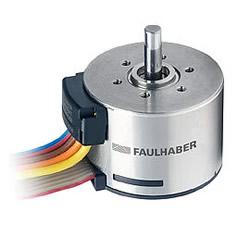Elon Musk: 'Robots will be able to do everything better than us'
Human Locomotion, Robotic Exoskeleton and Prostheses
The Robots are Coming
Professor Michael Gennert Looks Back at a First Decade of Robotics Engineering Program
The Drone Racing League (DRL) Builds The Fastest Racing Drone
Is robotics the key to repairing societal infrastructure?
Artificial Intelligence and Skynet
Airborne Drones on Patrol
Toyota Research Institute Invests in Intuition Robotics to Develop ElliQ
How a One-Man Team from California Won NASA's Space Robotics Challenge
Robotic Label Placement
Borrowing from Nature: Los Angeles-Based Robotics Company Brings IoT and Smart Home Outdoors
Spider robots on the move for additive manufacturing
New Army technology enables simultaneous multiple drone control
Teaching Robots to 'Feel with Their Eyes'
Records 2221 to 2235 of 3725
First | Previous | Next | Last
Featured Product

New incremental encoder IERF3 L from FAULHABER
Robotics and Automation - Featured Company

